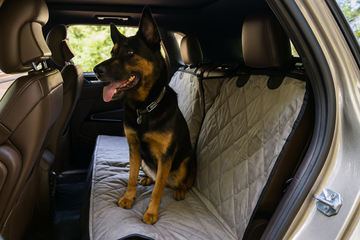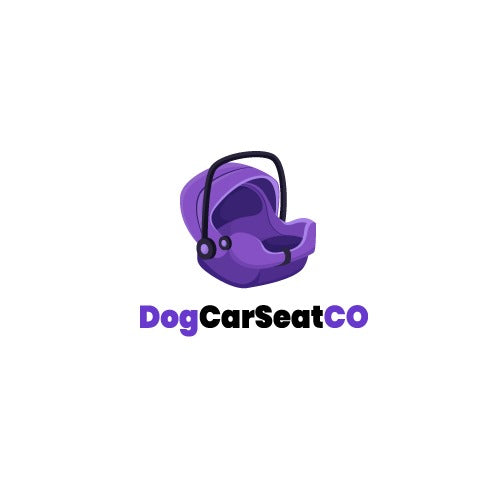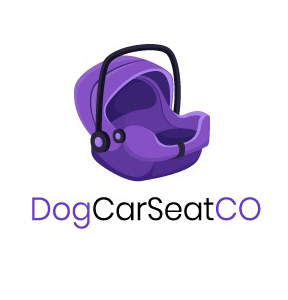
A sharp corner, a muddy park run, a wagging tail in the back. With a quality dog car seat cover, your pup stays safe, calm, and clean, and your car looks better after every trip.
This post focuses on three pillars that matter. Safety that helps prevent slips and injuries. Comfort features that cut stress, like padding and stable grip. Hygiene that traps hair, dirt, and moisture to support better health.
You also save money by protecting seats from scratches, stains, and odours. Next, you’ll get practical tips and a simple checklist to choose well and fit it right. For a broader overview of safe travel, see this comprehensive guide to dog car seat safety.

Health First: How Car Seat Covers Protect Joints, Skin, and Stress Levels
A smart setup does more than save your upholstery. The right dog car seat cover supports joints, calms nerves, and keeps skin clean. Think of it like a steady, padded nest that turns rough roads and sudden stops into routine rides.
Reduce bumps, slips, and joint strain on every drive
A padded dog seat cover cushions every jolt. Thick quilting or foam spreads the force from potholes and speed bumps, which helps prevent bruises and joint strain on rough roads. On a hard seat, a sharp brake can jar elbows and hips. On padding, that same brake feels like a short bounce.
A non-slip dog seat cover matters just as much. Rubber backing grips the bench, while seat anchors and headrest straps stop shuffle. Your dog gets a stable platform for their paws, so they do not slide or twist. In a fast stop, that grip can be the difference between staying put and skidding into the footwell.
Hammock designs add a simple safety barrier. They block the gap to the footwell, help prevent falls during quick turns, and reduce awkward landings that stress joints. This setup is a clear win for seniors, large breeds, and dogs with hip or elbow issues that do not like sudden shifts. For a deeper look at these dog car seat cover benefits, see this guide to safe travel essentials: benefits of pet seat protectors.
Quick example: you brake hard at a zebra crossing. The foam layer softens the impact, the anchors hold the cover still, and the hammock stops a drop into the footwell.
Lower anxiety and motion sickness with a steady space
Dogs relax when their footing is sure. A defined, grippy area lets them brace through bends and roundabouts, which helps cut nausea. Less wobble often means less drool and fewer upset tummies.
Make the space feel familiar. Add a blanket that smells like home, or a favourite toy. Small, stable cues reduce stress and can help lower heart rate during travel. A mesh window is a smart touch too. When dogs can see you, they often settle faster, which supports calmer breathing and better rest after trips. For practical tips on queasy pups, this overview on dog car sickness and motion sickness is helpful.
If you prefer a hammock style, there is extra reassurance. As noted here on benefits of hammock-style seat covers for car safety, the barrier helps prevent falls during sudden stops, which reduces travel anxiety as well as injury risk.
Cleaner surfaces support skin and breathing
Clean surfaces mean calmer skin and easier breathing. Mud, dander, pollen, and saliva can irritate paws and ruffle coats. A waterproof layer blocks damp, while wipe-clean fabrics let you remove grime and allergens fast. That supports better pet travel health for dogs and people.
Simple habits make a big difference:
- Quick wipe after wet walks: Cut odour and remove grit before it dries into the fibres.
- Regular shake and vacuum: Reduce dander build-up that can trigger flare-ups.
- Spot clean drool and spills: Stop bacteria and smells before they spread.
These small steps keep the car fresher and help your dog avoid itchy patches or clogged fur. For more on hygiene and comfort gains, explore the health perks of dog car seat covers for cleaner journeys in this article on minimising allergens and bacteria with car seat covers.
Comfort Features That Make Car Rides Easier for Your Dog
Comfort starts with a steady, soft place to sit. Your dog should feel secure in traffic, cosy on longer drives, and cool in warm weather. A well-chosen, comfy dog car seat cover turns sharp turns and speed bumps into a calm ride, so your pup can settle, sleep, and arrive relaxed.

To match different cars and dogs, choose a style that fits how you travel:
- Bench cover: Good all-rounder for the back seat, suits one or more dogs.
- Hammock dog seat cover: Creates a cradle from front to back headrests, great for safety and calm.
- Single seat cover: Ideal for the front or a small dog in the back.
- Boot liner: Best for estates and SUVs, protects the load area and bumpers.
Padding, breathability, and non-slip design
Soft, quilted Oxford fabric is a popular choice. It is tough, water resistant, and easy to clean. Under the top layer, soft padding adds cushion so hips and elbows rest without pressure points. On long drives, this padding feels like a thick duvet, so dogs can curl up and nap without fidgeting.
A rubberised, non-slip backing grips the seat so the cover stays put. Pair that with seat anchors and headrest straps, and you get a stable platform that does not slide during sudden stops. Your dog feels planted through roundabouts, which reduces wobble and queasy tummies.
Breathable fabric matters in warm weather. A breathable dog seat cover lets air move through the surface, so heat does not build under your dog. If your car has heated seats in winter, breathability also helps spread gentle warmth without hot spots. Thicker pads feel cosier, but they should not trap heat. Aim for a balanced fill that supports joints while staying cool to the touch.
For airflow on hot days, a mesh viewing window lets air from the front vents flow to the back and helps dogs see you. This small detail can lower stress and helps prevent overheating on summer trips. For a broader view of comfort and protection, see this guide on the benefits of waterproof dog seat covers for comfort and care.
Key takeaways:
- Soft, padded quilting: Better rest on motorways and holiday drives.
- Non-slip base and anchors: Steady footing during quick stops.
- Breathable layers: Cooler in summer, compatible with heated seats in winter.
Hammock shape, side flaps, and door protection
A hammock shape links the front and back headrests to create a lifted cradle. It blocks the gap to the footwell, which stops slips during sharp braking. The raised sides also give a nest-like feel that many dogs find calming. For anxious pups, this feels like a soft box that says, you are safe here.
Look for zips or clip points that let you drop one side for a passenger, fold a section for ISOFIX access, or open a middle zip for an armrest. This flexibility helps when you switch between solo dog trips and family rides.
Side flaps are practical on rainy park days. They drape over sills and doors to protect paint and trim from claws, mud, and spray. They also act as a step area, so dogs can place a paw without slipping on plastic or leather. When loading, this small shield keeps the car cleaner and gives your dog more confidence.
If you want to compare style choices and padding options, this overview on seat covers and dog car seats touches on materials and support, including breathable and quilted finishes, which can guide your pick for a calm ride. See the article on dog car seats vs seat covers.
Comfort tweaks for seniors and puppies
Small tweaks make a big difference for young joints and older backs. Start with a base that is flat, padded, and grippy, then add targeted support where your dog needs it.
Helpful add-ons:
- Orthopaedic layer: Place a thin memory foam pad under the cover, or choose a cover with denser quilting. This spreads pressure and eases stiff hips.
- Rolled towel as a headrest: Tuck it along the edge or under the chin area to prevent neck strain on long drives.
- Non-spill water bowl: Fix it in a corner, so your dog can sip at stops without soaking the seat.
- Extra grip: Add a short microfibre mat on top for weak back legs. It feels soft and stops paws sliding.
- Bolsters or raised edges: A cushioned border gives a nest-like feel, which helps puppies and nervous dogs settle faster.
Make entry and exit easy. Lower one side of the hammock for a stable step-in, or use a low ramp for seniors. Keep the surface dry and clean, so paws find traction. On short vet trips, this reduces fuss. On long motorway runs, it supports steady sleep and fewer aches at the end.
Quick example:
- Short trip to the park: a non-slip base, side flaps, and a mesh window keep things calm and clean.
- Long holiday drive: add memory foam under a comfy dog car seat cover, a towel headrest, and a spill-proof bowl. Your dog naps, stretches, and arrives happy.
Safety Counts: Install Your Cover Right and Use Proper Restraints
Safe dog car travel starts with two parts working together. The restraint does the life-saving job, and the cover makes the ride stable and comfortable. Fit a dog car seat cover tightly, keep buckles and ISOFIX clear, and use a proper restraint in the back seat if front airbags are active. Check visibility and airflow so your dog can see you and stay cool.

Pair the cover with a crash-tested harness or crate
A crash-tested harness or travel crate is the safety device. The cover adds grip, padding, and a defined space that helps your dog settle.
- Use a dog seat belt harness that fits snugly around the chest. Avoid slack.
- Clip the car tether to the harness D-ring, not the collar. This protects the neck in a sudden stop.
- Keep the tether short enough to stop lunging or reaching the front, yet long enough for a comfortable sit or down.
- Place dogs in the back seat if front airbags are active. Airbags can hurt dogs in a crash.
- Keep belt paths and buckle slots visible so restraints attach cleanly.
If you are weighing options, this list of crash-tested dog harnesses as car seat alternatives gives a clear overview of smart safety choices for different cars and breeds.
Secure installation that will not slip or bunch
A tight fit keeps the platform stable and your restraint working as designed. Follow these quick steps to fit a dog car seat cover with a clean, secure setup:
- Set the cover flat across the bench, lined up with seat belt slots.
- Clip and tighten the headrest straps so the top edge sits level.
- Push the seat anchors deep into the gaps behind the backrest.
- Smooth the base so there are no folds under paws or buckles.
- Check that ISOFIX points and buckles you need remain accessible.
- Give the cover a firm tug at each corner to test grip.
Start your drive and recheck the fit after the first 10 minutes. Fabric settles and straps may need a small tighten. For a practical example of a quick, stable setup, see this easy-install waterproof dog car seat hammock, which uses anchors, headrest straps, and a non-slip base to stop movement.
Pro tips:
- Keep belt slots clear so your harness tether or crate strap sits flat.
- Avoid routing straps over loose fabric, which can shift in a stop.
- Confirm your dog has clear sight of you and steady airflow from vents.
Training your dog to settle on the cover
A short, consistent routine helps your dog relax and keeps everyone focused before you roll.
- Cue your dog to jump in, then guide them to the covered area.
- Ask for a sit or down on the cover, then reward calm.
- Clip the tether to the harness D-ring and remove slack.
- Wait 10 seconds with the engine off. Reward quiet behaviour.
- Start the engine. Reward calm again at the first junction.
- Keep early drives short, then build up to longer trips.
Keep your voice soft and your cues the same each time. If your dog fidgets, pause, ask for a sit or down, reward calm, then continue. Short practice drives teach that the car is routine, not a cue to get excited. For more fit tips and practical safety gains, this guide on the benefits of dog seat covers for safe car travel pairs comfort with restraint use for safer journeys.





